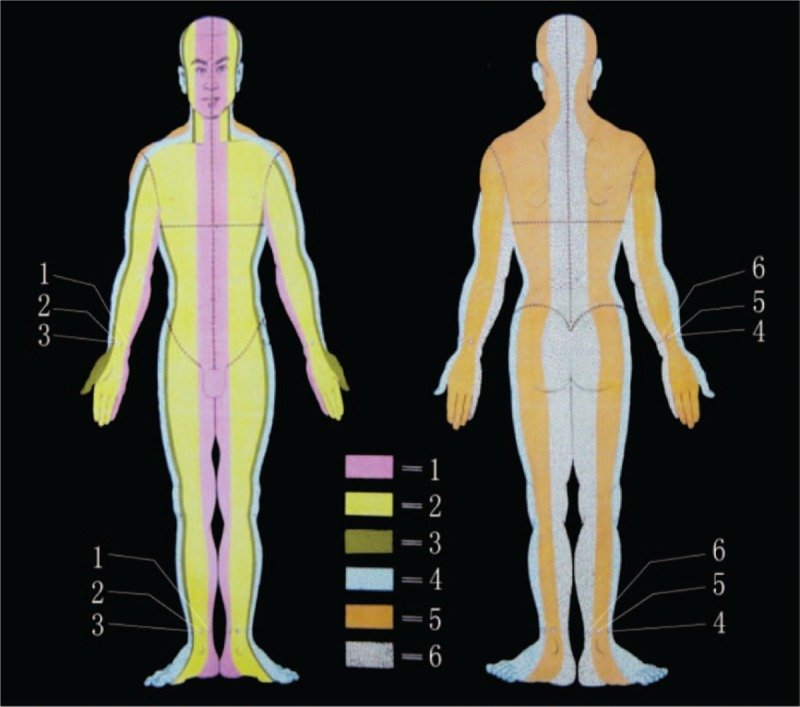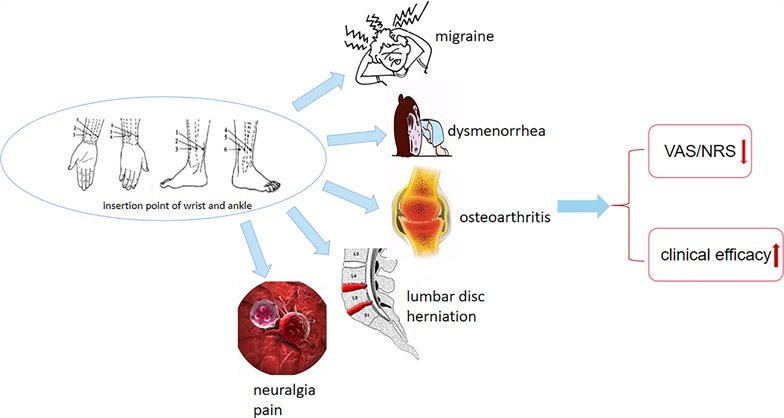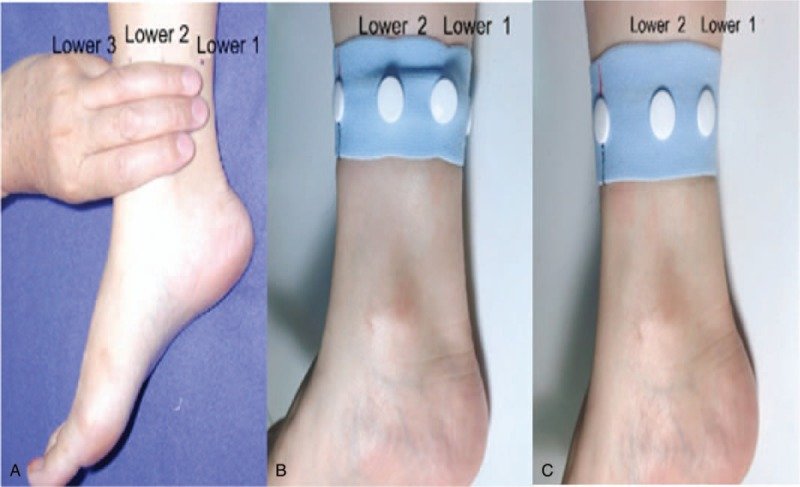What is Wrist and Ankle Acupuncture (WAA)?
In the 1970s, Zhang Xinshu, a professor at the Second Military Medical University invented a new acupuncture system Wrist and Ankle Acupuncture (WAA). By taking the needle entry points from the wrist or the ankle, WAA is a superficial acupuncture therapy that treats diseases by dividing the body into six longitudinal zones. These zones correspond to six zones and needle entry points on the left and right wrists and ankles, respectively. Combined with modern neurology theory and traditional acupuncture theory, WAA can be regarded as an electrical stimulation therapy. Featured in simple operation and high safety, WAA can treat the symptoms all over the body, though the acupuncture site of WAA is limited to the wrist and ankle.

Compared with routine acupuncture, WAA does not need to appear “Deqi” and its needle positions are located only in the wrists and ankles where no important organs and vessels are located. Moreover, WAA does not need to follow the traditional Chinese theory of “therapy with syndrome differentiation” and only requires precise needle locations appropriate to the patient’s signs and symptoms. Hence in comparison with routine acupuncture, WAA is a relatively safe, convenient, and quick procedure
Indications of Wrist and Ankle Acupuncture
According to the current clinical studies, WAA has been proven to have significant efficacy in clinical pain
- orthopedic pain
- dysmenorrhea
- soft tissue pain
- toothache
- etc.
WAA builds on the principles of traditional meridian theory.
- The body zones targeted in wrist-ankle acupuncture correspond to the twelve meridians’ surface pathways.
- The specific points chosen for needle insertion align with the meridians’ courses and their associated conditions.
- These points are also close to established acupuncture points with similar therapeutic effects.
The focus on the wrists and ankles is strategic. These areas concentrate multiple “five-shu” points, which influence meridian imbalances. Additionally, many traditional acupuncture techniques involve shallow needle insertion, similar to wrist-ankle acupuncture. In essence, wrist-ankle acupuncture is an extension of traditional acupuncture, relying heavily on established meridian theory. This traditional framework provides a foundation for understanding wrist-ankle acupuncture’s effectiveness, and vice versa, experiments with wrist-ankle acupuncture can potentially shed new light on acupuncture.
Research articles on Wrist and Ankle Acupuncture
1. Common Pain

Pan et al reported that WAA had good analgesic efficacy for several types of common chronic pain alone and in combination with other therapies, and it is safer than oral medication.
Pan M et al. Wrist-ankle acupuncture has a positive effect on chronic pain: a systematic review and meta-analysis. Acupuncture and Herbal Medicine, 2023
2. Catheter-related Bladder Discomfort (CRBD)
Hou et al. reported that WAA can effectively relieve catheter-related bladder discomfort (CRBD) symptoms after transurethral resection of the prostate.
Hou J et al. Safety and efficacy of wrist-ankle acupuncture in treating catheter-related bladder discomfort after transurethral resection of the prostate: a double-blind randomized clinical trial. Gland Surg, 2022
3. Cancer Pain
Dong et al found out that WAA has certain effect on cancer pain, and the effect of WAA combined with pharmacological intervention is better than that of drug therapy alone.
Dong B et al. Wrist-ankle acupuncture has a positive effect on cancer pain: a meta-analysis. BMC Complement Med Ther. 2021
More studies on Wrist and Ankle Acupuncture
- Cao HT, et al. Effect of wrist-ankle acupuncture on postoperative analgesia after total knee arthroplasty. Chinese Journal of Integrative Medicine. 2023
- Zhai et al. Time-effective analgesic effect of acupressure ankle strip pressing wrist and ankle acupuncture point on primary dysmenorrhea. Medicine (Baltimore), 2022
- Xu N, et al. Wrist–Ankle Acupuncture as Additional Therapy for Postoperative Multimodal Analgesia in Orthopedic Surgery: Systematic Review and Meta-Analysis. Pain Medicine. 2022
- Xu LP, et al. Effect of wrist-ankle acupuncture therapy combined with auricular acupuncture on cancer pain: A four-parallel arm randomized controlled trial. Complementary Therapies in Clinical Practice. 2020
- Zhu LB et al. Wrist-Ankle Acupuncture for the Treatment of Pain Symptoms: A Systematic Review and Meta-Analysis. Evidence-Based Complementary and Alternative Medicine, 2014
